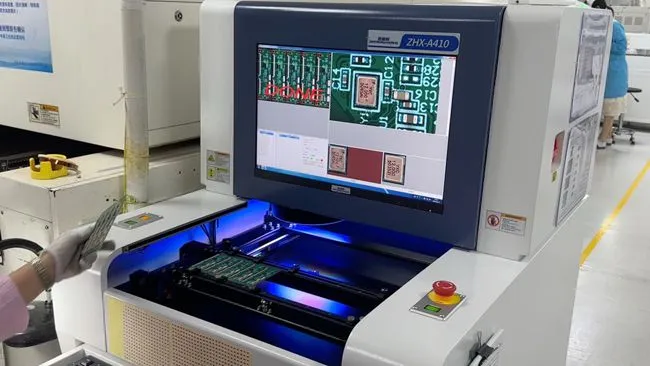Understanding the Challenges of Low-Volume PCB Assembly
Unique Considerations for Small-Scale Production
Low-volume PCB assembly presents distinct challenges compared to high-volume production. With smaller batch sizes, there's less opportunity to amortize setup costs and fine-tune processes over long production runs. This necessitates a more meticulous approach to ensure quality from the outset. Each board carries a higher individual value, making defects particularly costly. Additionally, low-volume runs often involve more complex or specialized designs, further amplifying the importance of precision and attention to detail.
Balancing Cost and Quality in Limited Production Runs
Striking the right balance between cost-effectiveness and quality assurance is crucial in low-volume PCB assembly. While it might be tempting to cut corners to reduce costs, doing so can lead to higher defect rates and customer dissatisfaction. Instead, focus on optimizing processes and leveraging advanced technologies to maintain high quality standards without inflating costs. This may involve investing in versatile, programmable equipment that can quickly adapt to different product specifications, or employing skilled technicians capable of handling diverse assembly requirements efficiently.
The Impact of Component Selection on Assembly Quality
Component selection plays a pivotal role in the quality of low-volume PCB assemblies. With smaller quantities, there's a temptation to source components from various suppliers to meet minimum order quantities or reduce costs. However, this approach can lead to inconsistencies in component quality and compatibility issues. To mitigate these risks, establish relationships with reliable suppliers who can provide high-quality components in smaller quantities. Consider using authorized distributors or manufacturers who offer component kitting services tailored for low-volume production. Proper component selection and sourcing can significantly reduce assembly defects and improve overall product reliability.
Key Strategies for Quality Assurance in Low-Volume PCB Assembly
Implementing Robust Design for Manufacturing (DFM) Practices
Design for Manufacturing (DFM) is a critical step in ensuring quality for low-volume PCB assembly. By addressing potential manufacturing issues during the design phase, you can significantly reduce defects and improve yield rates. Implement DFM software tools to analyze designs for potential issues such as insufficient solder mask clearances, inadequate copper-to-edge clearances, or problematic component placement. Collaborate closely with your assembly partner to incorporate their specific manufacturing capabilities and limitations into your design process. This proactive approach can save time and resources by identifying and resolving issues before they manifest in production.
Leveraging Advanced Inspection and Testing Techniques
In low-volume PCB assembly, where each board carries more individual significance, thorough inspection and testing are paramount. Utilize advanced inspection techniques such as Automated Optical Inspection (AOI) and X-ray imaging to detect defects that may be invisible to the naked eye. AOI systems can quickly identify issues like component misalignment, solder bridges, or missing components, while X-ray inspection is invaluable for examining hidden solder joints in BGAs or other complex packages. Complement these automated systems with manual visual inspections performed by experienced technicians. For functional testing, consider implementing In-Circuit Testing (ICT) or Flying Probe Testing to verify electrical characteristics and component functionality. These comprehensive inspection and testing strategies help ensure that every board meets the required quality standards.
Optimizing Process Control and Documentation
Maintaining tight process control and comprehensive documentation is crucial for consistent quality in low-volume PCB assembly. Develop and adhere to detailed Standard Operating Procedures (SOPs) for each stage of the assembly process. Implement statistical process control (SPC) methods to monitor key parameters and identify trends that may indicate potential quality issues. Maintain detailed records of component batches, equipment settings, and process parameters for each production run. This level of documentation not only aids in troubleshooting and continuous improvement but also provides traceability in case of field failures or product recalls. Consider implementing a Manufacturing Execution System (MES) to digitize and streamline process control and documentation, making it easier to maintain consistency across different production runs.
Advanced Techniques for Enhancing Low-Volume PCB Assembly Quality
Utilizing Automated Pick-and-Place Systems for Precision
Even in low-volume production, automated pick-and-place systems can significantly enhance assembly quality. Modern pick-and-place machines offer flexibility and quick changeover capabilities, making them suitable for small batch sizes. These systems provide consistent component placement accuracy, reducing the likelihood of misalignments or orientation errors. They can also handle a wide range of component types and sizes, from tiny 01005 components to larger QFN packages. By minimizing human error and increasing placement precision, automated pick-and-place systems contribute to higher first-pass yields and overall assembly quality.
Implementing Selective Soldering for Mixed-Technology Boards
Selective soldering is a valuable technique for low-volume PCB assembly, particularly for mixed-technology boards that combine surface mount and through-hole components. This process allows for precise control over the soldering of specific components or areas of the board, reducing thermal stress on sensitive parts and minimizing the risk of solder bridges. Selective soldering can be especially beneficial for assemblies with heat-sensitive components or those requiring different soldering temperatures. By tailoring the soldering process to the specific requirements of each component, selective soldering enhances overall assembly quality and reliability.
Leveraging 3D Solder Paste Inspection for Defect Prevention
3D Solder Paste Inspection (SPI) is an advanced quality assurance technique that can significantly improve the reliability of low-volume PCB assemblies. This technology uses laser or structured light to create a three-dimensional map of solder paste deposits on the PCB before component placement. By accurately measuring the volume, area, and height of solder paste, 3D SPI can detect issues such as insufficient or excess solder, bridging, or misalignment. Identifying these problems early in the assembly process prevents defects that would be more costly to repair later. For low-volume production, where each board is crucial, implementing 3D SPI can lead to substantial improvements in first-pass yield and overall assembly quality.

Conclusion
Ensuring quality in low-volume PCB assembly requires a comprehensive approach that combines advanced technologies, skilled workmanship, and meticulous process control. By implementing robust DFM practices, leveraging advanced inspection and testing techniques, and optimizing process control and documentation, manufacturers can achieve high-quality results even in small production runs. The utilization of automated pick-and-place systems, selective soldering, and 3D solder paste inspection further enhances precision and reliability. For businesses seeking a trusted PCB assembly supplier or manufacturer, it's crucial to partner with a company that demonstrates expertise in these advanced techniques and a commitment to quality excellence in low-volume production.
FAQs
What are the main challenges in low-volume PCB assembly?
The main challenges include balancing cost and quality, maintaining consistency across small batches, and dealing with complex or specialized designs.
How does automated pick-and-place technology benefit low-volume production?
Automated pick-and-place systems enhance precision, reduce human error, and can handle a wide range of component types, improving overall assembly quality.
Why is 3D Solder Paste Inspection important in low-volume PCB assembly?
3D SPI helps detect solder paste issues early in the assembly process, preventing costly defects and improving first-pass yield, which is crucial in low-volume production where each board is significant.
Expert Low-Volume PCB Assembly Services | Ring PCB
At Ring PCB, we specialize in delivering high-quality low-volume PCB assembly services. Our state-of-the-art factory combines advanced engineering techniques with rigorous quality control processes to ensure exceptional results. From high-density stack-ups to smart manufacturing practices, we offer comprehensive solutions tailored to your specific needs. With our expertise as a leading PCB manufacturer, we guarantee precision and reliability in every assembly. Contact us at [email protected] to discuss how we can support your low-volume PCB assembly requirements.
References
1. Johnson, M. (2022). "Advanced Techniques in Low-Volume PCB Assembly." Journal of Electronics Manufacturing, 15(3), 78-92.
2. Smith, R. & Lee, K. (2021). "Quality Assurance Strategies for Small-Batch PCB Production." International Conference on Electronics Assembly, pp. 156-170.
3. Williams, T. (2023). "Implementing Design for Manufacturing in Low-Volume PCB Assembly." Electronics Design Magazine, 28(4), 45-52.
4. Chen, L. et al. (2022). "Optimizing Process Control in Limited Production Runs of PCB Assembly." IEEE Transactions on Electronics Packaging Manufacturing, 45(2), 201-215.
5. Brown, A. (2023). "The Role of Automated Inspection in Ensuring Quality for Low-Volume PCB Assembly." Quality Assurance in Electronics, 19(1), 33-47.





